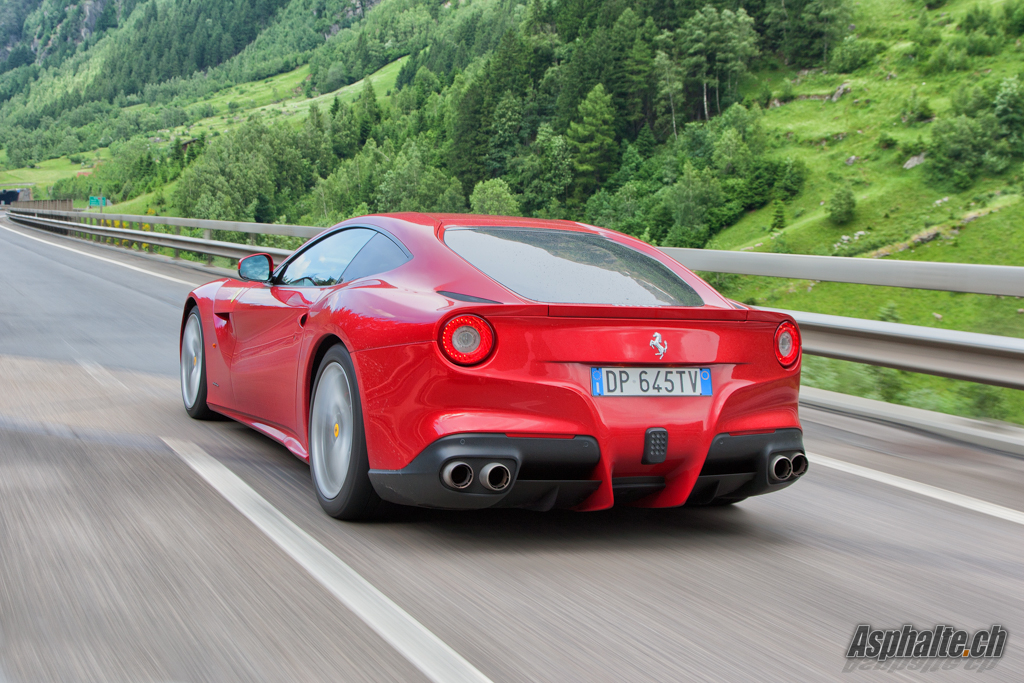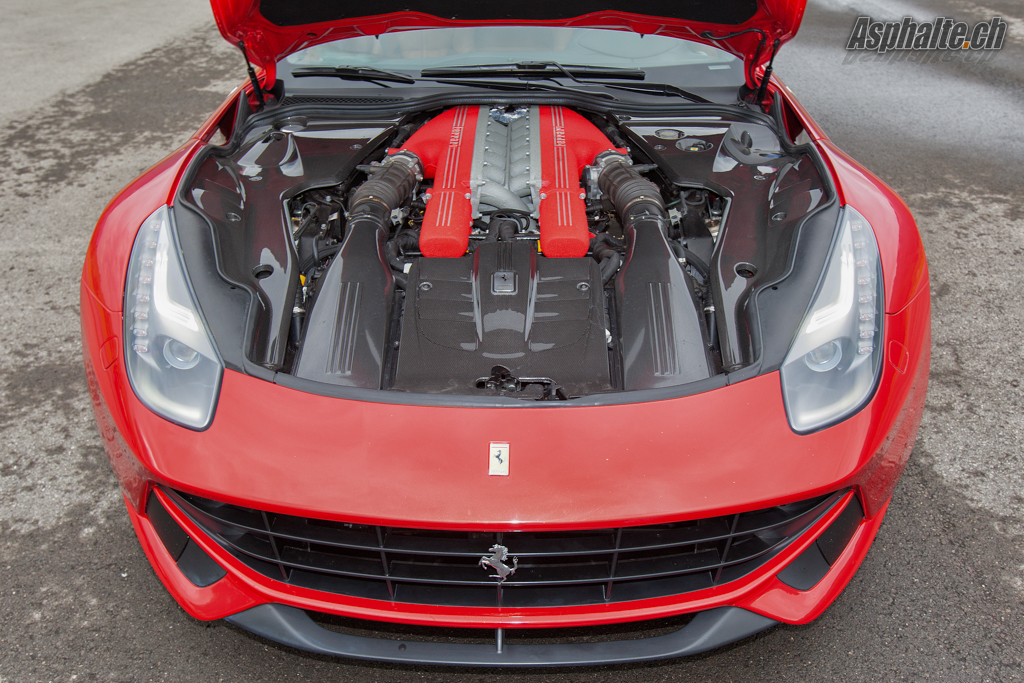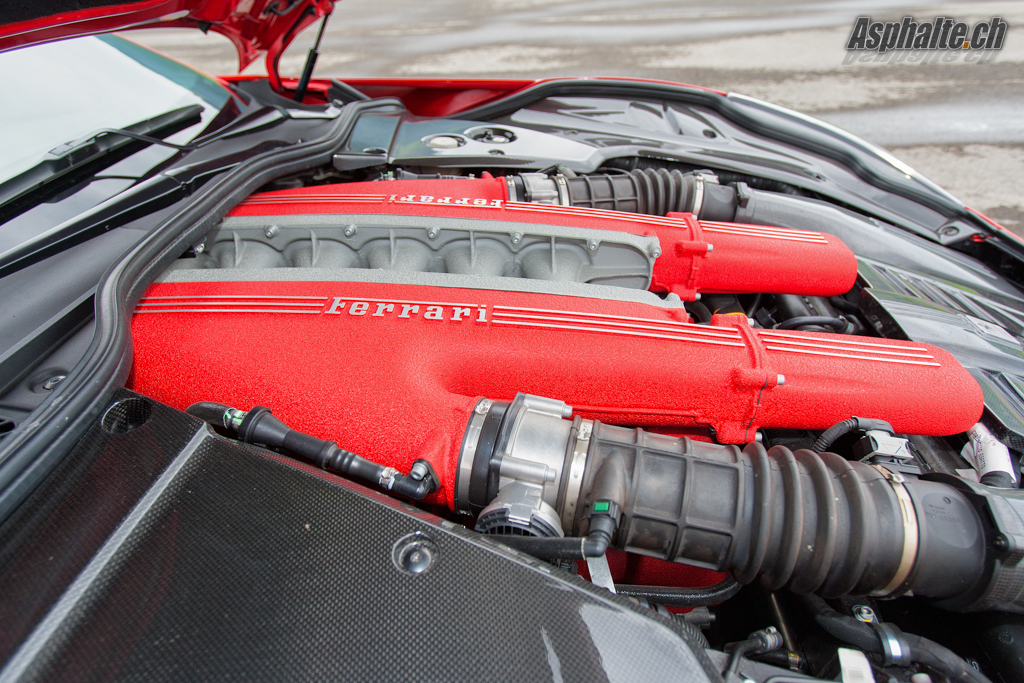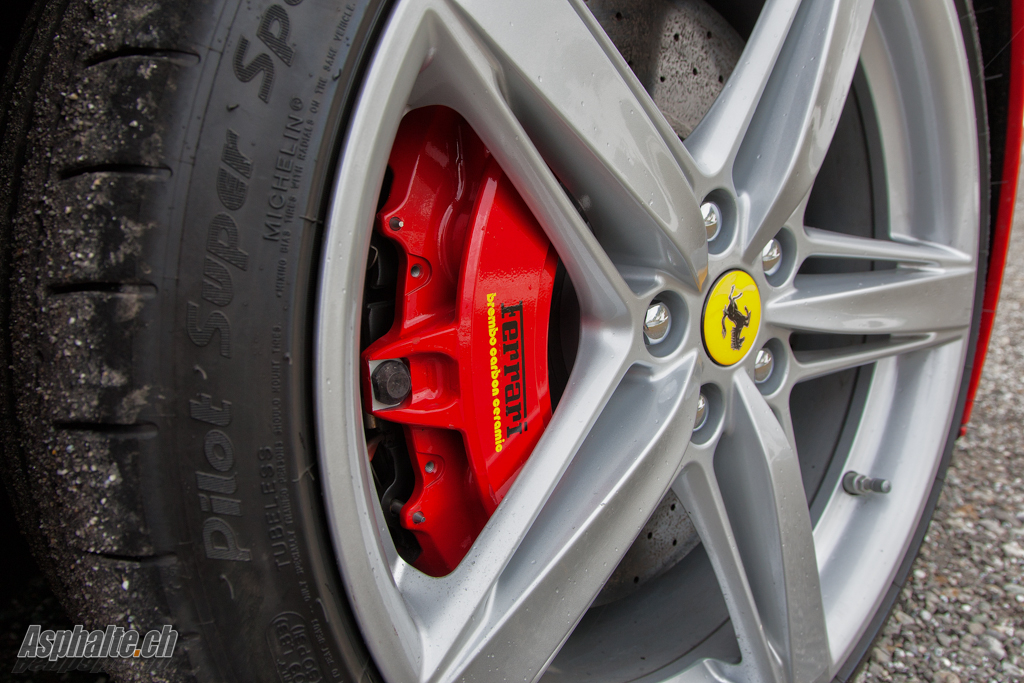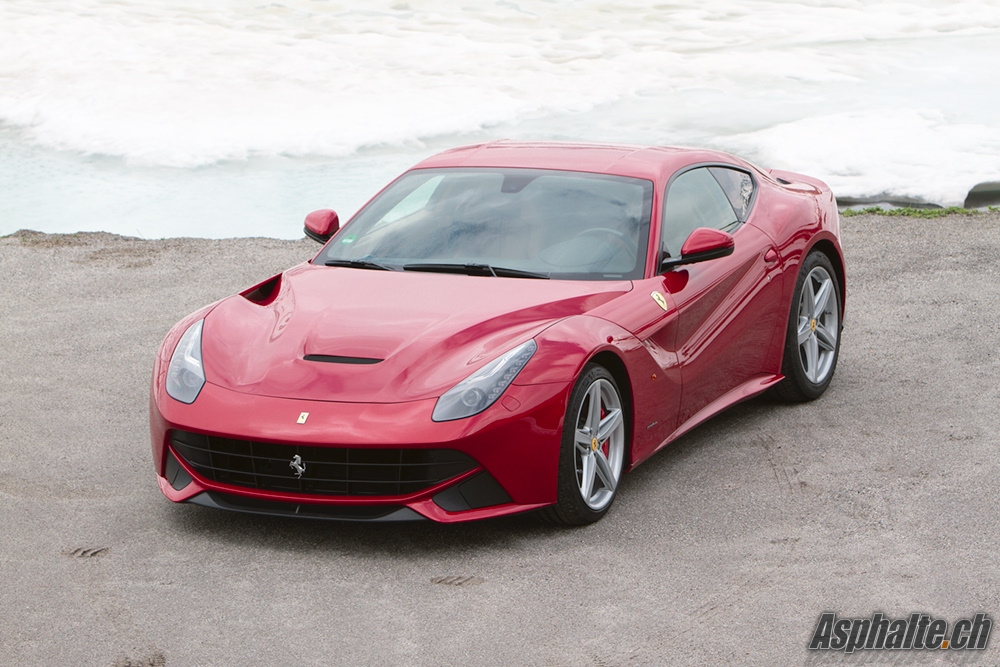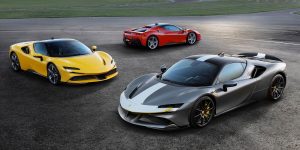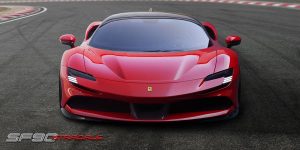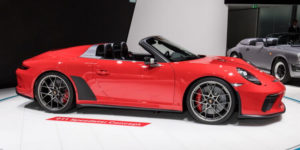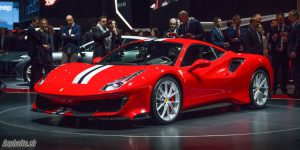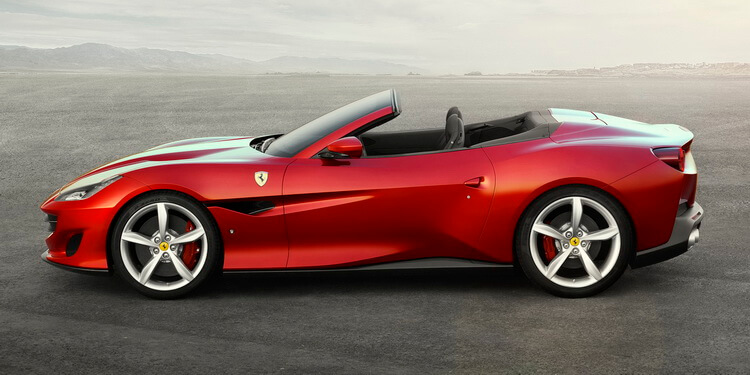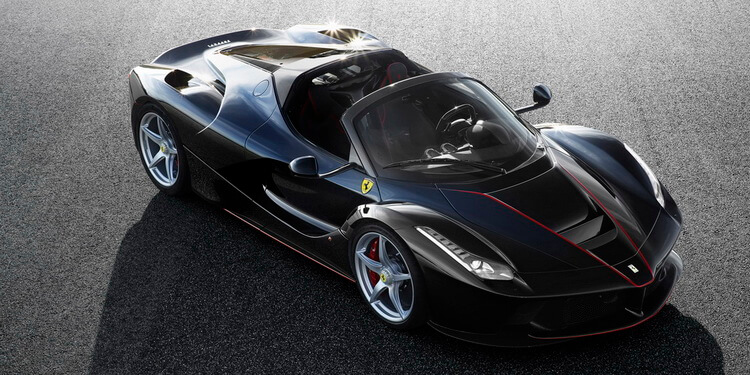Road Test: Ferrari F12 Berlinetta
As we leave Zug, the first function my fingers look for is the soft damping setting called “Bumpy Road”. The standard suspension setting of the F12 is firm, and in most conditions met during our two day test, the softer set-up will feel more appropriate. We have an hour of freeway drive ahead of us to reach the heart of the Swiss alps, a perfect opportunity to get acquainted with the car. The driving position reminds me of the 599, with a low sitting position and a relatively high steering wheel, but the impression to be a small human in such a large car is gone. The dual-clutch gearbox is docile, the V12 purrs quietly at 3300 rpm, whisking us up a narrow valley in a relaxed 150 km/h cruise.
This powertrain is the latest evolution of the 65 degrees Ferrari V12. The 6262cm3 displacement remains unchanged from the FF, but it has been deeply reworked to optimize output at high revs. Peak torque is only increased by 7 Nm (690 Nm at the same 6000 rpm), but maximum power jumps from 660 to 740hp at 8250 t/min, a specific output of 118.2 hp/liter. This new V12 outshines the 6.0L unit of the 599 GTB Fiorano (608 Nm, 620 hp), with a significant torque advantage throughout the rev range. Ferrari also claims a weight reduction of 60kg in comparison with the 599. We were unable to corroborate the 1630kg kerb weight “with light weight options” on our faithful corner scales with this pre-series press car and accepted Ferrari’s request not to publish a figure that would not fully reflect production cars. The split between axles came in at 47.6% front and 52.4% rear, close to the 46/54% figure consigned on the official spec sheet.
With a theoretical power-to-weight ratio of 2.2kg/hp, abundant torque, this massive 740hp figure and repeated advice to approach the car with the greatest respect, it is difficult to resist the temptation of a few elasticity tests from 100 km/h on freeways. The result is remarkably … unimpressive. With the gearbox set in manual mode on the 7th ratio, the V12 pulls from 2000 rpm without complaint, but the torque on tap pales in comparison with turbocharged units.
By repeating the exercise in automatic mode, the F1-DCT box jumps from 7th to 4th gear with a slight pause, but without any whiplash effect, a sign of excellent control of clutch actuators. The shove is much more muscular, but still falls short of the kind of transformative experience I was expecting. “So that is 740 hp ?” is the conversation topic as we sneak our way through Canton Uri from north to south in a decidedly very comfortable interior. In such conditions, heading straight to the Mediterranean Sea would be a formality, but our destination is the high altitude winding roads and scenery of the Gotthard massif. On this week day, tourists are a rare sight, and the unseasonal weather of this ungrateful spring is the guarantee of sparse traffic.

